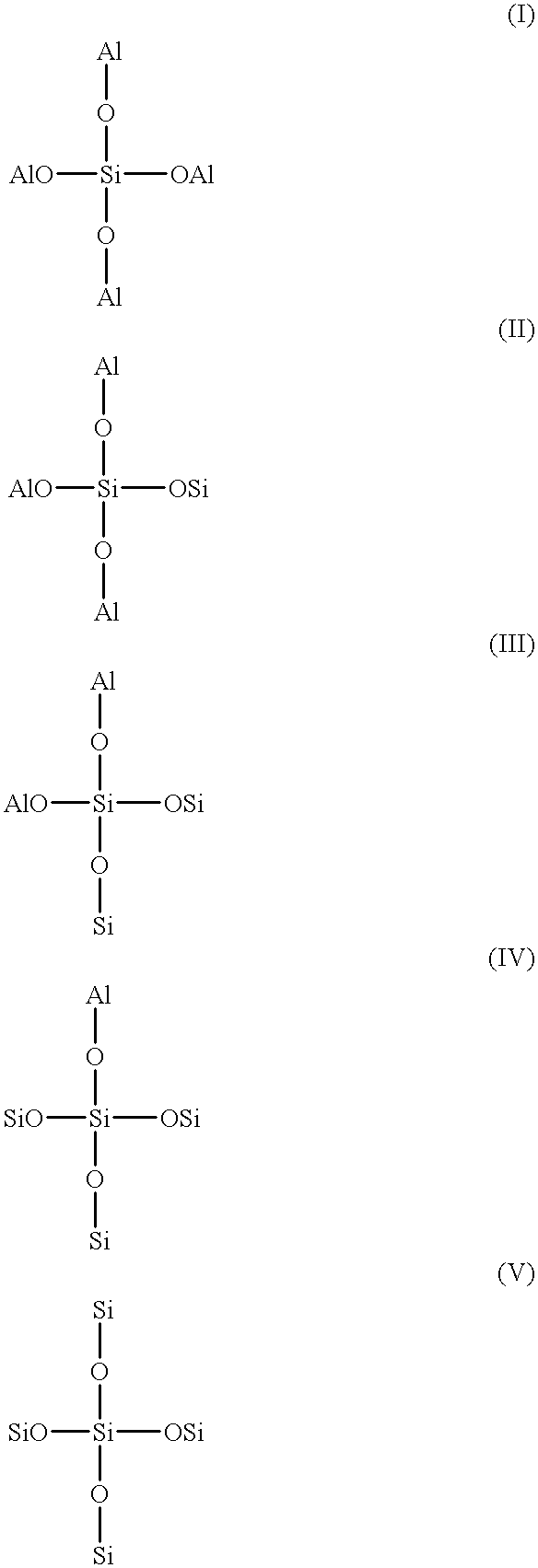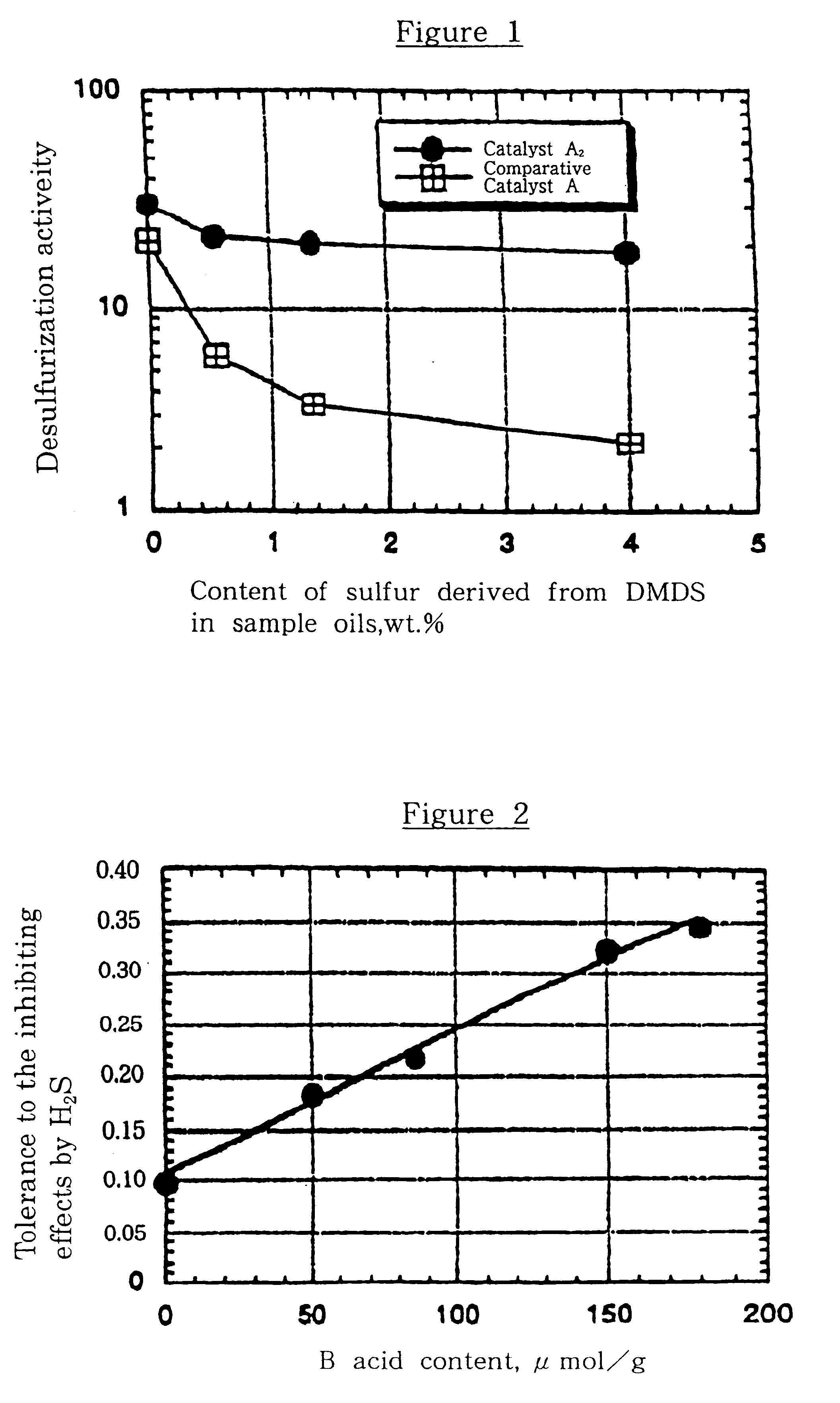Hydrotreating catalyst and processes for hydrotreating hydrocarbon oil with the same
a technology of hydrotreating catalyst and hydrocarbon oil, which is applied in the direction of hydrocarbon oil cracking, physical/chemical process catalyst, metal/metal-oxide/metal-hydroxide catalyst, etc., can solve the problems of ni-mo catalyst, high tolerance, co-mo catalyst, etc., to improve the tolerance of catalyst to inhibiting effects and efficiently remove
- Summary
- Abstract
- Description
- Claims
- Application Information
AI Technical Summary
Benefits of technology
Problems solved by technology
Method used
Image
Examples
example x-1
Sample Oils 1 to 4, shown in Table 1, were desulfurization-tested in the presence of Catalyst A.sub.2 under the desulfurization test conditions I shown in Table 3. The test results are given in FIG. 1, which shows the relationship between the desulfurization activity and content of DMDS-derived sulfur in the sample oil.
example x-2
The desulfurization tests were conducted with Sample Oil 5 shown in Table 1, which was passed over Catalyst A.sub.1, Catalyst A.sub.2, Catalyst A.sub.3, Catalyst A.sub.0 and Comparative Catalyst A under the desulfurization test conditions II shown in Table 3. These catalyst samples had different B acid contents. The test results are given in FIG. 2, which shows the relationship between the tolerance to the inhibiting effects by H.sub.2 S and B acid content.
example x-3
The desulfurization test was conducted with Sample Oil 5 shown in Table 1, which was passed over Catalyst A.sub.0 under the desulfurization test conditions II shown in Table 3. The test results are given in Table 4. The test was also conducted over Catalyst A.sub.3, which contained the same silica content (95 wt. %) and was on the silica-alumina (amorphous silica-alumina) carrier, under the same conditions. The test results are also given in Table 4, for comparison.
As shown in FIG. 1, Catalyst A.sub.2 has a much higher activity than Comparative Catalyst A, even with the DMDS-added sample oil, i.e., the sample oil which produces a larger quantity of hydrogen sulfide, by which is meant that Catalyst A.sub.2 has notably improved tolerance to the inhibiting effects by H.sub.2 S. It is considered that the improved tolerance mainly results from the interactions of the spill-over hydrogen forming sites (Ni) with the silica-alumina carrier. FIG. 2 shows that the tolerance to the inhibiting ...
PUM
| Property | Measurement | Unit |
|---|---|---|
| Fraction | aaaaa | aaaaa |
| Fraction | aaaaa | aaaaa |
| Fraction | aaaaa | aaaaa |
Abstract
Description
Claims
Application Information
 Login to View More
Login to View More - R&D
- Intellectual Property
- Life Sciences
- Materials
- Tech Scout
- Unparalleled Data Quality
- Higher Quality Content
- 60% Fewer Hallucinations
Browse by: Latest US Patents, China's latest patents, Technical Efficacy Thesaurus, Application Domain, Technology Topic, Popular Technical Reports.
© 2025 PatSnap. All rights reserved.Legal|Privacy policy|Modern Slavery Act Transparency Statement|Sitemap|About US| Contact US: help@patsnap.com


